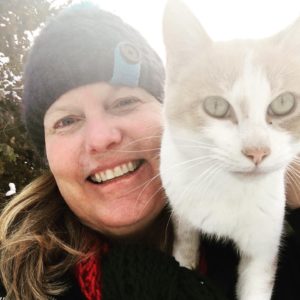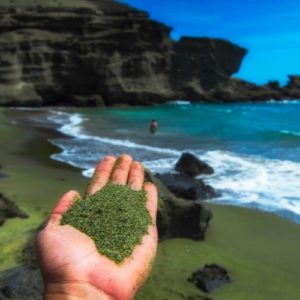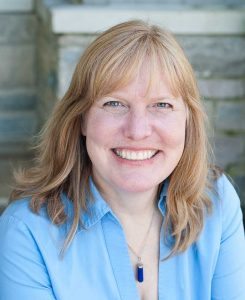To see a World in a Grain of Sand
And a Heaven in a Wild Flower,
Hold Infinity in the palm of your hand
And Eternity in an hour.
~ William Blake
One of the silver linings of this global pandemic and the resulting changes in social life has been the opportunity to slow down and pay attention to things we may have previously walked right past on our way to one of our many social or business engagements. Even the smallest thing can be a gateway to an experience of the extraordinary, if only we bring our attention to it. We really can see a whole World in a grain of sand. We can witness a hundred, thousand natural miracles every day, from the sun climbing in the sky to the mysterious tracks in the snow outside our window. Those miracles are there waiting for us to attend to them and, more importantly, to find our delight in theirs.
I have recently finished listening to a series of interviews between Orland Bishop, a profound mystic trained in South African, West African, and European Hermetic wisdom traditions, with American teacher, speaker and writer, Charles Eisenstein. Orland explained that African gnostic tradition doesn’t hold science to fixed laws the way in which the more modern “hardened” view of science does. Among many astounding things he discussed during the interviews, he articulated that our attention is what makes something sacred. Our attention changes the thing upon which we are putting our attention.
 Of course, we know this to be true with human beings. And we have observed it with our pets. But are we open to considering the possibility that simply by giving our attention to the tree or the water or the soil, we can actually help those beings become what they are meant to become? Just as do people and animals, the rest of the natural world longs for our attention.
Of course, we know this to be true with human beings. And we have observed it with our pets. But are we open to considering the possibility that simply by giving our attention to the tree or the water or the soil, we can actually help those beings become what they are meant to become? Just as do people and animals, the rest of the natural world longs for our attention.
I had the pleasure of attending the Biodynamic Agriculture conference in November. I was unsure if I would enjoy a virtual conference, as so much of the richness of assembling with a large group of gardeners, farmers and educators is, well, assembling! The Biodynamic Agriculture Association (BDA) did such a stellar job of organizing and supporting everyone during the conference that it truly did feel as if we were all together, moving from keynote presentation down the hall to our workshops. I was grateful to be in attendance and thanks to modern technology, it was also nice to be able to rake leaves while listening to the live keynote address.
During a breakout session with Aaron Perry of Y on Earth, we learned about peridot, the green stone that many of us know as the birthstone of those born in August. Today, most of the world’s peridot is mined by Native Americans in Arizona on the San Carlos Reservation. It is considered a scared stone in many native traditions. In the Christian tradition, peridot has been associated with the archangel Raphael, the angel of compassion and healing.
 There are a few green beaches in the world — yes, green! The green sand actually comes from naturally occurring peridot/olivine. Scientists have recently discovered that these beaches naturally have higher rates of carbon sequestration than anyplace else, and it is believed to be related to the peridot. You can read about it here.
There are a few green beaches in the world — yes, green! The green sand actually comes from naturally occurring peridot/olivine. Scientists have recently discovered that these beaches naturally have higher rates of carbon sequestration than anyplace else, and it is believed to be related to the peridot. You can read about it here.
So, what are we to do with this information? Well, our modern agribusiness science will probably have us mine all the available peridot, combine it with some chemicals, and sell it to consumers as a “natural” fertilizer. Heck, maybe we will even begin putting it in gummy vitamins and face creams! But I wonder if we should simply pay attention. If we can see a World in a grain of sand, what does a grain of peridot have to teach us?
Our Westernized science conversation has lately seemed to center itself around a singularly focused narrative about what is science. I’ve heard a number of people proudly proclaim recently that they “believe in science”, as if science is like Santa Claus or the Tooth Fairy – you either believe in it or you don’t. What I appreciate so much about what biodynamics and Orland Bishop have to teach us is that true science is so complex, mysterious, and filled with spirit, we would be foolish to think we can define it so easily, and even more foolish to take ownership of it.
I am not a scientist, or a farmer, or a mystic. I am simply a teacher and a gardener who has been trying to do my best to pay better attention to the mysterious and fascinating natural world around me. I am filled with gratitude for our colleagues in biodynamic agriculture who help make the tools and resources available to all of us who strive to pay attention.
Biodynamic Agriculture Association: https://www.biodynamics.com/
Josephine Porter Institute: https://jpibiodynamics.org/
 Mary O’Connell
Mary O’Connell
In 2002, Mary opened LifeWays Early Childhood Center in Milwaukee where she served as director for 13 years. Mary is an alumni of the University of Wisconsin-Madison. She is a traveling teacher and Training Coordinator for LifeWays North America. She has taught parents and childcare teachers all over the U.S. and internationally. In 2010, Mary co-authored Home Away From Home: LifeWays Care of Children and Families with Cynthia Aldinger, and in 2018 she authored Observing Young Children: A Tool for Meaningful Assessment. Most recently, Mary started a non-profit farm education program at Paradise Farm in West Bend, where she and her colleagues provide outdoor, farm-based education to children and adults.